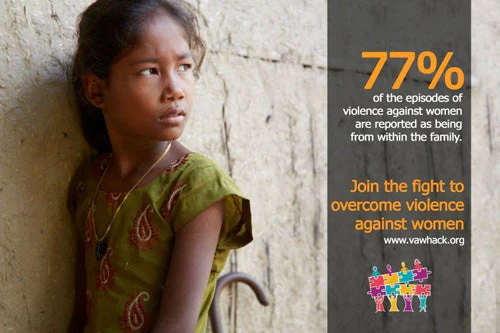
Violence against women is a pervasive problem worldwide, causing the deaths of more women between the ages of 19 and 44 than wars, cancer, or car accidents. In South Asia, gender violence is widespread and persists in many forms, as the statistics below demonstrate:
- Every week in Bangladesh, more than ten women suffer from an acid attack
- In India, 22 women are killed every day in dowry-related murders
- In Sri Lanka, 60 percent of women report having suffered physical abuse
- In Pakistan, more than 450 women and girls die every year in so-called “honor killings”
- And in Nepal, the practice of enslaving young girls, whereby parents sell their young daughters – typically age 6-7 – to be girl servants is still widely practiced
Video Platform Video Management Video Solutions Video Player
The gravity of violence against women in South Asia surged to global public attention in December 2012 following the horrific gang rape and subsequent death of a 23-year-old New Delhi student. The case sparked a movement called “1 Billion Rising," with rallies and events in India and throughout the world. Earlier in 2012, the shooting in Pakistan of Malala Yousafzai, a teenage advocate for girls’ education, also spurred public outcry worldwide. For me, these tragic events created a renewed sense of purpose and greater urgency to tackle this critical human rights and development issue in South Asia.
While the World Bank is relatively new to the issue of gender violence, the 2012 World Development Report on Gender shed light on the prevalence of the problem and its relationship to women’s role in development. In South Asia, the World Bank is launching a new program aimed at improving its response to violence against women in the region, deepening our understanding of the underlying causes of violence against women, and testing approaches for prevention. However, violence against women is a complex problem requiring action at all levels of society.
In the spring, we asked young people from across the region to share their ideas through mail, SMS, and email on what it will take to end gender based violence in their countries. We received over 1200 entries, including innovative ideas and impressive responses from both young women and young men. We subsequently held a panel discussion titled “Breaking the Silence,” with experts speaking out and sharing their experience and expertise on practical and policy approaches to addressing the issue of gender violence.
We realize that engaging youth and tapping into their passion and creativity is critical for breaking out of the cycle of gender violence. Young people have the greatest potential to change their society and the future. With this in mind, we are hosting a Hackathon in Nepal on June 16th aimed at finding technological solutions to address violence against women. We encourage you to sign up for the hackathon through this link.
On June 17-18, in partnership with Oxfam International, the World Bank will convene policy makers, practitioners, researchers and opinion makers from across South Asia to discuss how to overcome violence against women in the region. We understand that no single actor is equipped to address this complex, multi-faceted and intractable problem. In light of this, the conference aims to bring together a diverse group of individuals and organizations and in doing so, heighten our response to gender violence in South Asia. Follow us on Facebook and Twitter over the next week for continuous updates and highlights as the conference and hackathon unfold.
We understand that the complexity, interconnectivity, scale and gravity of violence against women in South Asia and across the world will require efforts at all levels. So talk to us through your comments, share your ideas, and ask questions.
Together we can overcome gender violence.


Join the Conversation